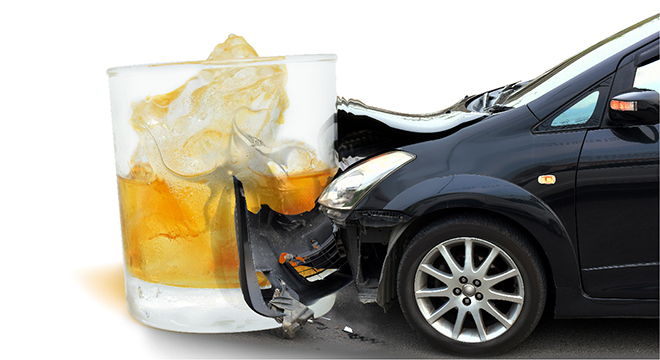I commented last week on the difficulty experienced by insurers to obtain irrefutable proof where there are suspicions that someone involved in an accident may have been driving under the influence of alcohol (DUI).
An article in the Ombudsman’s Briefcase provides insight into how the Ombudsman for Short-term Insurance approaches such cases.
Most vehicle insurance policies contain exclusions that entitle insurers to decline liability where DUI is indicated, but the insurer bears the burden of proving the exclusion on a balance of probabilities. Normally, these would include evidence such as blood or breathalyser tests to prove that:
- The incident driver was under the influence of alcohol when the accident occurred; and
- The incident driver’s level of intoxication influenced or impaired his or her driving ability.
Where the insurer is unable to provide such test results, it may rely on circumstantial evidence that can include hospital records, witnesses’ and/or attending police officers’ statements describing the driver’s demeanour.
Case study 1 – reliable eyewitnesses
The insured, Mr S, claimed that, as he was changing lanes, another vehicle in front of him also changed lanes. When he returned to the original lane, he was rear-ended by another vehicle, causing him to lose control of his vehicle. He also stated that he did not consume alcohol before the accident. The insured could not be tested via a breathalyser because of the Covid-19 related regulations.
An assessor appointed by the insurer interviewed several witnesses. Two of them confirmed that they saw Mr S throwing alcohol bottles into the veld at the scene of the accident. Witness 1 said that, when he spoke to Mr S, he could smell alcohol and he was drunk. Witness 2 said she could smell alcohol on Mr S’s breath and that he and his passengers were drunk.
Mr S was travelling at no less than 190km/h in a 120km/h zone. It was Osti’s view that the insured’s vehicle travelled at an excessive speed that was inappropriate for the prevailing circumstances and probably contributed to the loss and the extent of the damage to the vehicle. On the probabilities, the insured drove in the manner that he did because his driving ability had been impaired by the alcohol that he had consumed, which was found to have contributed to the accident.
The insurer declined liability for the claim on the basis that Mr S failed to provide true and complete information in relation to the events surrounding the incident. The insurer further submitted that Mr S was driving under the influence of alcohol and failed to take the necessary steps to minimise or prevent the loss.
Considering all of the above, the Osti upheld the insurer’s rejection of the claim.
Case Study 2 – unreliable witnesses
Mr Y, the incident driver, reported that he stopped at a stop street, and then accelerated into the intersection after checking that it was safe to proceed. A black vehicle driven by Mr X collided with the rear door of Mr Y’s red vehicle.
The insurer’s assessor interviewed three witnesses: two police officers who had attended the accident scene and a passenger in Mr X’s vehicle.
The passenger stated that Mr Y started fighting with them, seemed intoxicated and, although there was no alcohol in Mr Y’s vehicle, he reeked of alcohol.
The first police officer stated that Mr Y did not smell of alcohol, but his demeanour demonstrated that he was tipsy. A breathalyser test could not be conducted because of the Covid-19 regulations.
The second police officer stated that Mr Y was not sober. He was not unsteady on his feet but was moving slightly backwards and forwards. He stated that it would be incorrect to make conclusions about Mr Y’s body movements because he could have been cold or in a state of shock.
The insurer argued that Mr Y was under the influence of alcohol because he was aggressive, acted drunk, smelled of alcohol and looked tipsy. The insurer also argued that Mr Y did not stop at the stop street; thus, the alleged alcohol consumption had affected his driving ability.
Mr Y disputed that he was under the influence of alcohol. He stated that he was a paramedic and had to work long hours during the pandemic and that the accident may have happened due to fatigue. He also stated that during the accident, his head hit the steering wheel or window, thereby, disorientating him.
Mr Y provided the Osti with an affidavit from the third party’s passenger which stated that the information she provided to the insurer’s assessor was false. She did so as she was under the impression that the insurer was going to pay for her medical expenses. This was confirmed by Mr X, who also stated that Mr Y did not smell of alcohol.
The Osti found there was, was, on a balance of probabilities, no evidence that Mr Y consumed any alcohol before the accident.
Although the evidence from the interviews with the two police officers suggested that Mr Y may have been under the influence of alcohol, a review of the assessment recordings revealed that the assessor repeatedly asked both police officers and the passenger leading questions that were entangled with presupposed and suggestive answers.
The Osti noted that the assessor did not pose any questions to the police officers about Mr Y’s head injury or considered whether this could have affected his demeanour.
Please also read our article in December 2021 on this case.
Considering all the evidence, the Osti concluded that the insurer had not discharged its onus to substantiate its rejection of the claim and recommended that the insurer settle the claim, which it did.



